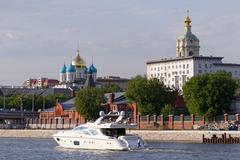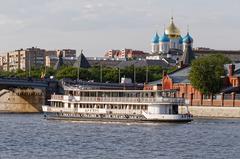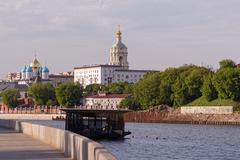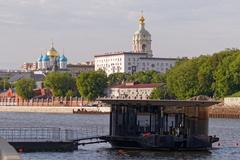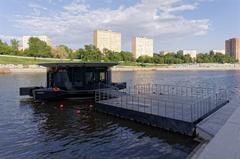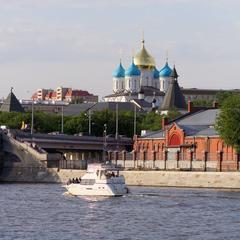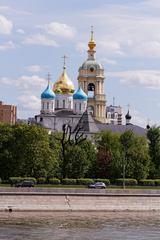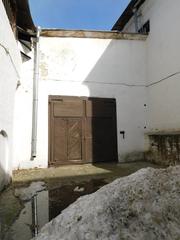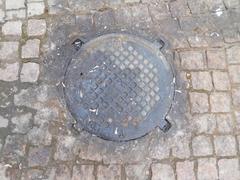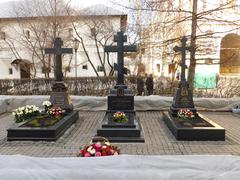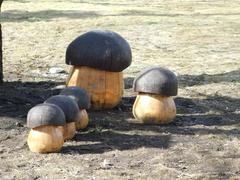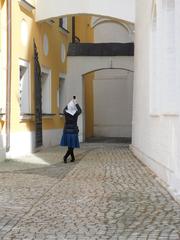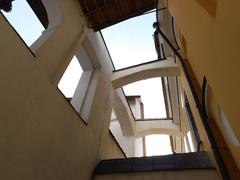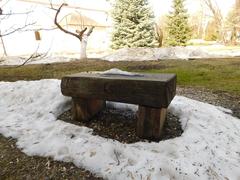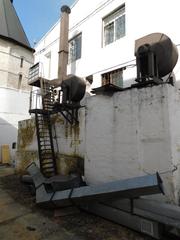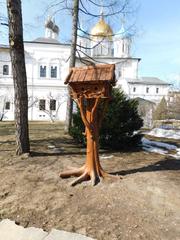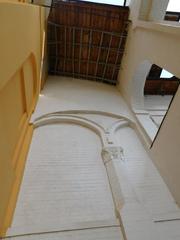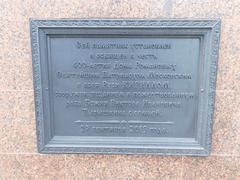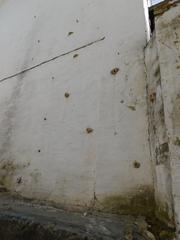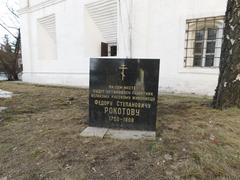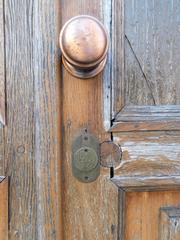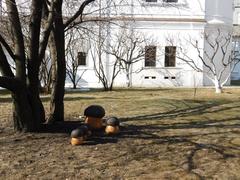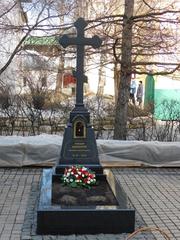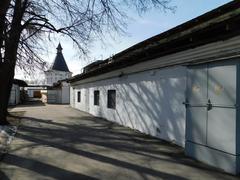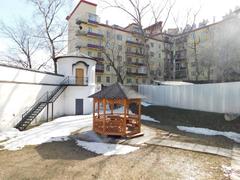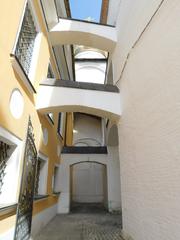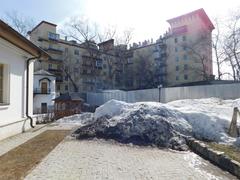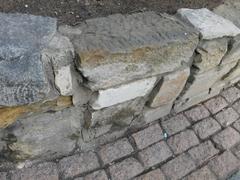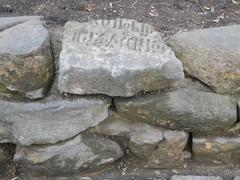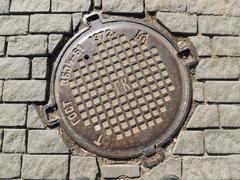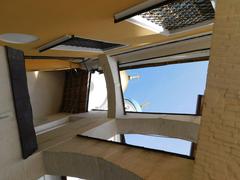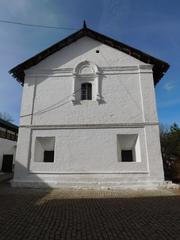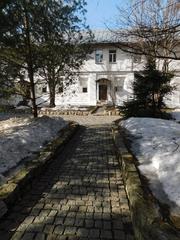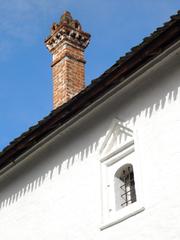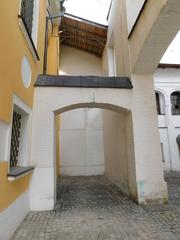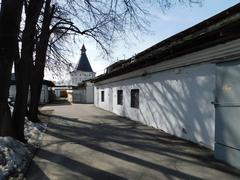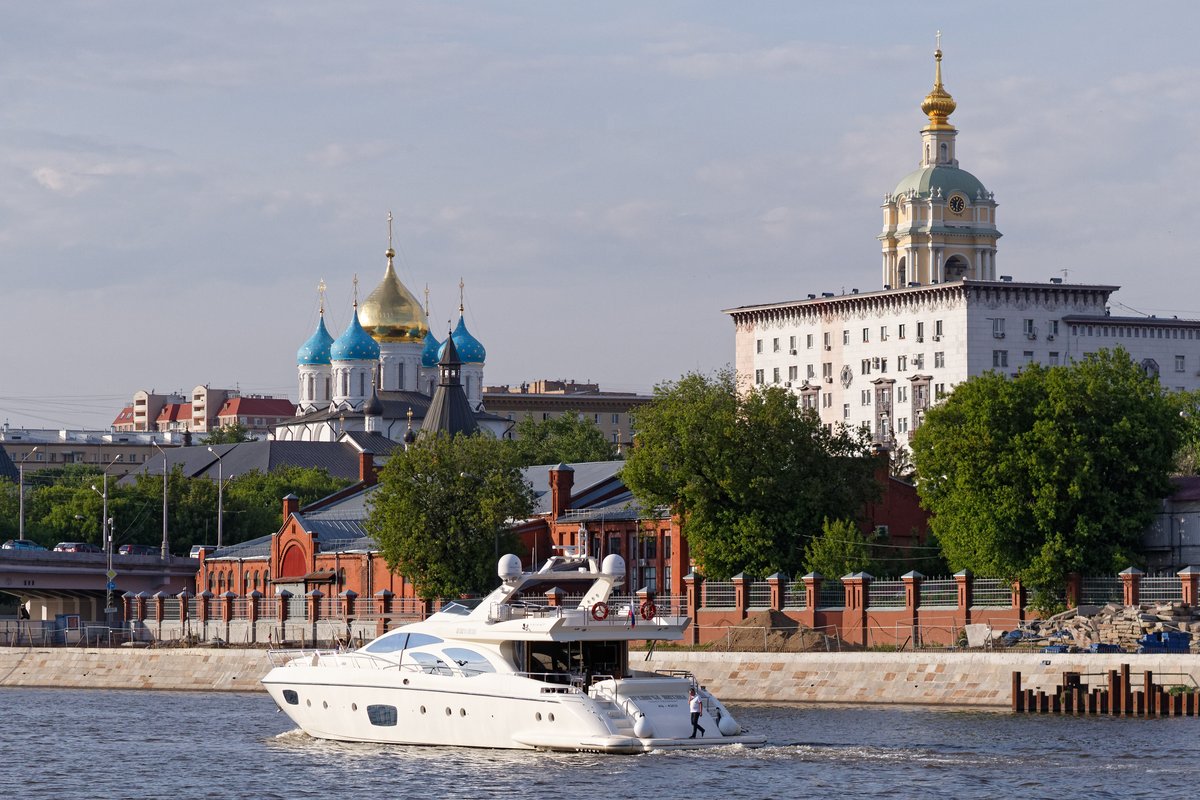
Novospassky Monastery: Visiting Hours, Tickets, and Comprehensive Guide to Moscow’s Historic Gem
Date: 14/06/2025
Introduction
Novospassky Monastery (Новоспасский монастырь), perched on Krutitsky Hill and overlooking the Moskva River, is one of Moscow’s oldest and most storied religious sites. Founded in the early 14th century and relocated to its present, fortified location in 1491 by Ivan III, it has played a central role in Moscow’s spiritual, cultural, and even military history. Closely associated with the Romanov family, the monastery has weathered centuries of change—from periods of noble patronage and architectural flourishing to war, Soviet suppression, and recent revival.
This comprehensive guide explores Novospassky Monastery’s origins, historical significance, architectural and artistic treasures, and provides practical visitor information—including up-to-date visiting hours, ticketing, accessibility, and travel tips. Whether you are a history buff, architecture enthusiast, pilgrim, or traveler, Novospassky offers a unique lens into Russia’s spiritual and dynastic legacy.
Table of Contents
- Historical Overview
- Architectural and Artistic Highlights
- Visiting Novospassky Monastery
- Unique Features and Events
- Frequently Asked Questions (FAQ)
- Summary and Travel Tips
- References and Further Reading
Historical Overview
Early Foundations and Relocation
Novospassky Monastery traces its roots to the early 14th century, originally located within the Moscow Kremlin as the Spassky (Savior) Monastery. In 1491, Ivan III ordered its relocation to Krutitsky Hill, on the left bank of the Moskva River, marking its transformation from a central spiritual institution to a vital, fortified outpost on the city’s periphery. This strategic move established the monastery as a key defensive stronghold in Moscow’s southern approaches, particularly during the Crimean Tatar raids of the 16th century (OrthodoxWiki; Sacred Destinations).
Monastery Fortifications and Defense
The monastery’s pentagonal red-brick walls and seven bastions, constructed in the 17th century, reflect its dual role as sanctuary and fortress. These formidable defenses contributed to Moscow’s broader system of fortified monasteries, which together formed a protective ring around the city (Lonely Planet; Discover Walks).
Dynastic Patronage and Romanov Connections
Novospassky’s fortunes rose with the patronage of powerful families, notably the Sheremetevs and the Romanovs. In the 17th century, Mikhail Romanov, the first Romanov Tsar, and his father, Patriarch Filaret, made the monastery both a dynastic abbey and a symbol of their legitimate rule. The Romanov crypt beneath the cathedral contains the remains of early family members, while frescoes within the main cathedral visually narrate the family’s genealogy and divine right to rule (moscow.info; RBTH).
Turbulence, Decline, and Restoration
The monastery endured significant hardship during the Napoleonic invasion (1812), the Soviet era—when it was repurposed as a prison, orphanage, and factory—and Stalinist repressions, which saw nearby mass graves. In 1968, it was designated a museum and later assigned to restoration efforts. With the fall of the USSR, Novospassky was returned to the Russian Orthodox Church in 1991, sparking decades of restoration and renewed liturgical life (OrthodoxWiki; unansea.com; Moscow Pass Blog).
Architectural and Artistic Highlights
Cathedral of the Transfiguration of the Savior
Completed between 1645–1649, the five-domed Cathedral of the Transfiguration of the Savior is the monastery’s centerpiece. Its white stone facades and grand proportions are inspired by the Kremlin’s Assumption Cathedral. The interior boasts a rare 17th-century fresco cycle, including a unique genealogical tree of the Romanovs, linking them to biblical and legendary rulers (Lonely Planet).
Bell Tower and Gate Towers
The monumental bell tower, completed in 1785 by Ivan Zherebtsov, is one of Moscow’s tallest at nearly 81 meters. It features three tiers with Doric, Ionic, and Corinthian columns, blending Baroque and neoclassical styles. The main gate tower, in the Moscow-baroque style, provides a decorative contrast to the austere defensive walls (RBTH).
Other Notable Churches and Crypts
- Church of the Intercession (1675): Houses the monastery’s refectory and features vibrant 19th-century murals.
- Church of the Znamenie Icon of the Virgin (1795): Built in neoclassical style by the Sheremetev family as a private mausoleum.
- Church of St. Nicholas the Wonderworker: Reflects the monastery’s charitable past as an infirmary.
- Patriarch Filaret’s House: Highlights the monastery’s ties to the Russian Orthodox hierarchy.
Frescoes, Iconography, and Memorials
Novospassky is renowned for its frescoes, especially those inside the Transfiguration Cathedral, which blend religious themes with Romanov dynastic imagery. The iconostasis features intricate wood carving and gilding. The necropolis beneath the cathedral holds early Romanov burials, and a nearby chapel commemorates the 300th anniversary of Romanov rule (Discover Walks).
Visiting Novospassky Monastery
Visiting Hours
- Daily: 10:00 AM – 6:00 PM (last admission 5:30 PM)
- Closed: Major Orthodox holidays and for special events. Hours may vary seasonally—confirm via the official website or local listings.
Tickets and Admission
- Grounds: Free entry
- Cathedral & Exhibition Halls: Ticket required (approx. 300 RUB for adults; discounts for students/seniors)
- Guided Tours: Available in Russian and English (advance booking recommended)
- Donations: Appreciated for candles or participation in services
Accessibility and Facilities
- Accessibility: Main grounds are accessible to visitors with mobility challenges; some historic buildings have limited access or stairs.
- Facilities: Restrooms, a souvenir shop, and basic amenities are available.
- Dress Code: Modest attire is required. Women should cover their heads; men must remove hats inside churches.
- Photography: Permitted on the grounds; inside churches, follow posted guidelines.
Getting There
- Address: Peasant Square, 10, Moscow, Russia
- Metro: Proletarskaya Station (walk toward the Moscow River, using the underground passage)
- Public Transport: Multiple bus and tram lines serve the area
- Nearby Sites: Krutitsy Metochion, Danilov Monastery, and Kolomenskoye Estate
Visitor Etiquette
- Maintain respectful silence, especially during services.
- Avoid loud conversation and disruptive behavior.
- Follow posted rules regarding photography and access.
Unique Features and Events
- Stauropegic Status: Novospassky is one of only 25 stauropegic monasteries in Russia, giving it direct subordination to the Patriarch and special privileges (unansea.com).
- Pilgrimage and Relics: The monastery attracts pilgrims to venerate icons like the “All-Russian” and “Savior Not Made by Hands,” and houses relics of saints and martyrs.
- Religious Festivals: Orthodox feast days and liturgies are open to visitors.
- Cultural Events: Host to concerts, lectures, and exhibitions.
Frequently Asked Questions (FAQ)
Q: What are Novospassky Monastery’s visiting hours?
A: Generally open daily from 10:00 AM to 6:00 PM, but check the official website for updates.
Q: Is there an entrance fee?
A: Grounds admission is free; exhibition areas and certain buildings require a paid ticket.
Q: Are guided tours available?
A: Yes, in Russian and English. Book in advance during peak season.
Q: Is the monastery accessible for disabled visitors?
A: The main grounds are accessible, but some historical buildings have limited access.
Q: Can I take photos?
A: Photography is allowed on the grounds, but restricted during services and in certain interiors.
Q: How do I get there by metro?
A: Use Proletarskaya Station, then follow signs toward the monastery.
Summary and Travel Tips
Novospassky Monastery is a living testament to Moscow’s religious, dynastic, and architectural traditions. Highlights include:
- The grand Cathedral of the Transfiguration of the Savior with its Romanov-themed frescoes
- The soaring 81-meter bell tower and well-preserved fortifications
- The necropolis and Romanov crypt
- Tranquil gardens and vibrant cultural life
Travel Tips:
- Visit on weekday mornings for a quieter experience.
- Dress modestly and be mindful of church etiquette.
- Combine your visit with other nearby historic sites.
- Check for special events or festivals to enrich your visit.
For real-time updates, audio guides, and more, download the Audiala app and follow us for the latest in Moscow travel and culture.
References and Further Reading
- OrthodoxWiki: Novospassky Monastery (Moscow)
- Sacred Destinations: Novospassky Monastery
- RBTH: Novospassky Monastery
- Lonely Planet: Novospassky Monastery
- Novospassky Monastery Official Website
- Moscow Info: Novospassky Monastery
- Unansea: Novospassky Monastery in Moscow
- Moscow Pass Blog: Hidden Gems of Moscow
- Discover Walks: Novospassky Monastery Top 10 Facts
